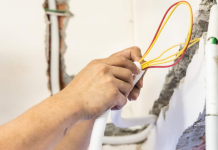Traffic jams and home repairs may seem to have nothing in common. But if you look closely, there are similarities between the two. People who drive cars and own homes can be guilty of making assumptions, leading to surprising results.
Imagine leaving for a trip during what you believe to be an off-peak hour. It’s a familiar path, and you’ve taken it many times without trouble. This time, though, you’re stuck in a terrible traffic jam. A simple trip became a learning experience. When someone believes they know everything, they may make quick or reckless judgments without considering the implications.
In house improvements, appearances can deceive. A homeowner may think, ‘A fresh coat of paint and some new fixtures should do the trick.’ As the renovation proceeds, the volume of waste demands finding an affordable skip bin hire service. Unforeseen complications can delay the project and increase the budget.
Challenging your beliefs and finding evidence that contradicts them becomes difficult when you make false assumptions. People can make biased decisions instead of questioning, exploring, and investigating. You may wonder if having too much faith in your judgment is a sign of confidence. Or do you make false assumptions to compensate for things you lack?
Relying solely on a familiar route can result in unexpected traffic jams, just as embracing naïve improvement ideas can lead to unforeseen challenges. Here’s how to keep things under control during home renovation projects:
- Planning And Preparation
Thorough planning and preparation are essential before beginning a home renovation project. Keeping everything under control can help you stay on schedule and prevent unnecessary expenses.
Consider these tips:
- Begin by outlining the project’s scope.
- Identify the locations you intend to renovate, the particular alterations you want to make, and the required supplies.
- Make a budget that covers material costs, labor, permits, and other charges.
- Obtain the necessary permits and approvals from local authorities to avoid legal troubles.
- Make a timeline outlining each stage of the renovation, including start and finish dates for various jobs.
A clear plan allows you to track your progress. Seek the advice and opinions of experts like architects or contractors on the project. Their knowledge and experience can help you identify possible problems and develop solutions early on.
- Hiring Reliable Professionals
The quality of the professionals you hire can often determine the success of a home renovation project. Choose contractors, electricians, and plumbers based on their experience, reputation, and references. Getting estimates and interviewing potential candidates can verify if their expertise aligns with your project.
Communicate your expectations clearly and ensure they provide accurate project dates and cost projections. Use tools, like project management software or shared online platforms, to consolidate communication and documentation in one place. Regular communication can help avoid misunderstandings and keep the project on track and within budget.
- Contingency Planning
Concealed structural flaws are examples of unexpected obstacles during home renovation projects. Set aside budget and timeline for contingencies to keep everything under control. You can allocate 10% to 20% to your emergency expenses.
A safety net can give you peace of mind and keeps you from being surprised by unexpected charges. Having a backup plan also means looking at other materials, ideas, or ways to do things in case the original plan doesn’t work.
On the other hand, safety measures are vital during a home improvement project. Ensure you have the correct signs, worker safety tools, and electrical and building safety rules. Keep your family safe if you live in the house while renovating. You can prevent accidents by keeping children and pets away from construction zones.
- Stay Informed About Progress
Regular site inspections are necessary to monitor the renovation’s progress. Look for indicators of deviations from the plan and address them immediately to prevent complications. You can include quality control checkpoints at various stages of the project. For example, complete all plumbing and electrical work before installing the drywall.
Keep up to date on the renovation’s progress. Maintain constant contact with contractors and other specialists involved. Inquire about accomplished tasks, forthcoming steps, and any potential issues they anticipate. Regular updates can help you make educated decisions and adjust the project timeline when challenges occur.
- Managing Expectations
Homeowners frequently have high expectations for the results of a renovation project. Wanting a beautiful and functional space is natural. However, managing your expectations means understanding that small delays, minor design changes, or unexpected difficulties are possible.
Try to avoid making significant design changes after the renovation work has already started. Aside from delays, unexpected costs, and confusion, mid-project changes can disrupt the workflow and cause inconsistencies. Make design changes a priority before starting work. Also, communicate your decisions as early as possible.
If you maintain a flexible and patient attitude, you can handle challenging situations without feeling frustrated or overwhelmed. Remember the end goal and understand that a successful renovation requires time and effort.
- Document Everything
Documentation is essential for maintaining organization during a home renovation project. Keep thorough records of all agreements, contracts, invoices, and receipts associated with the project. This documentation serves two purposes:
- Track expenses.
- Provide evidence in case of disputes with contractors or suppliers.
Take pictures before, during, and after each stage of the renovation process. You can use these visual records for referencing specific details in the future. Documenting helps with quality control by letting you compare the actual work to the agreed-upon plans.
Conclusion
It helps to develop a mindset that values curiosity and investigation instead of complacency. Whether choosing the correct nail size or redecorating a room, you must validate your assumptions. Adopting this approach can help you reduce setbacks and make well-informed decisions during a home renovation project.
















